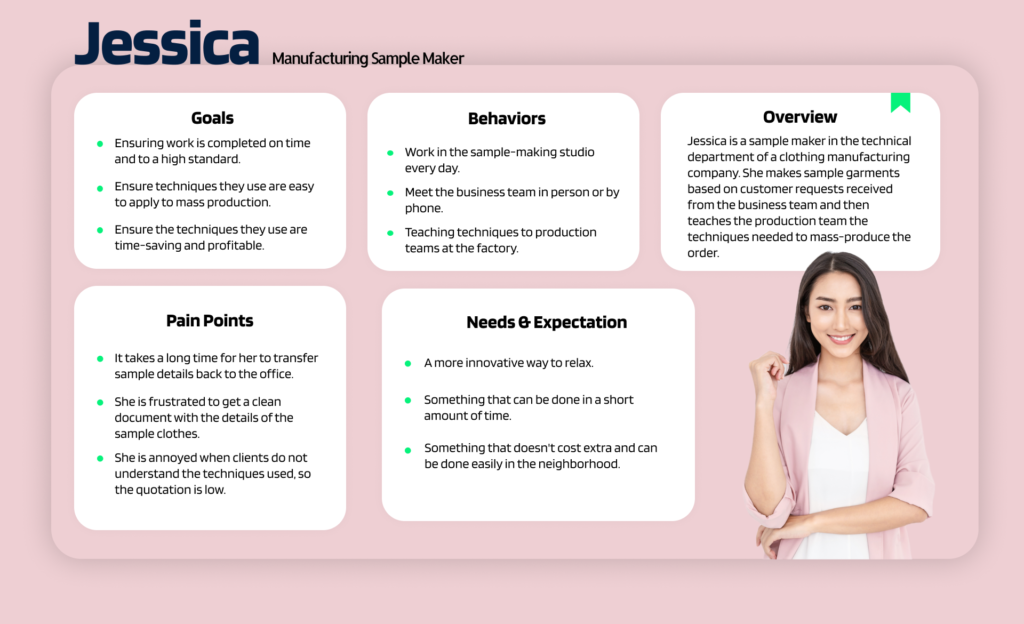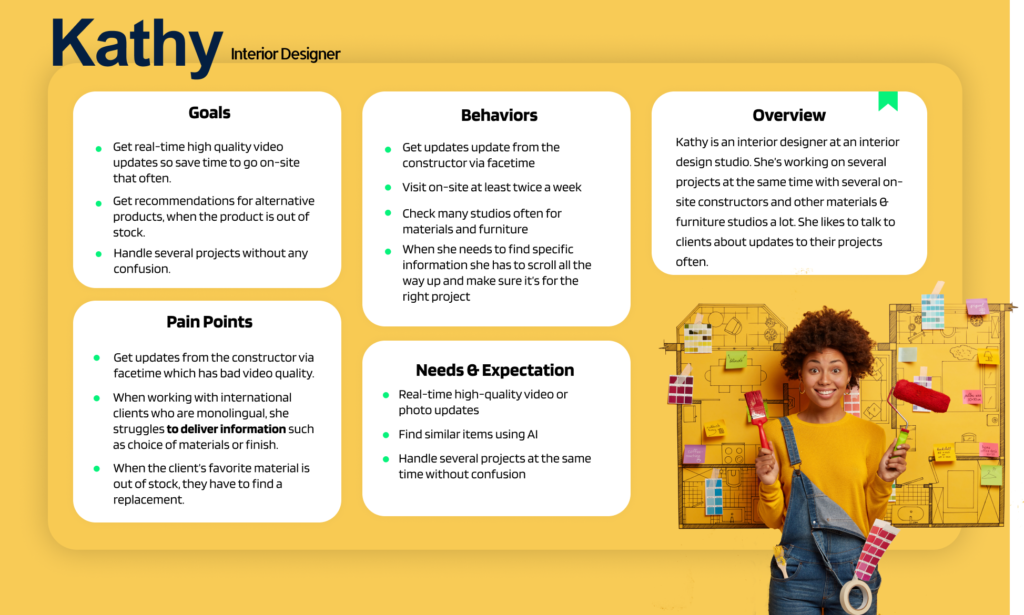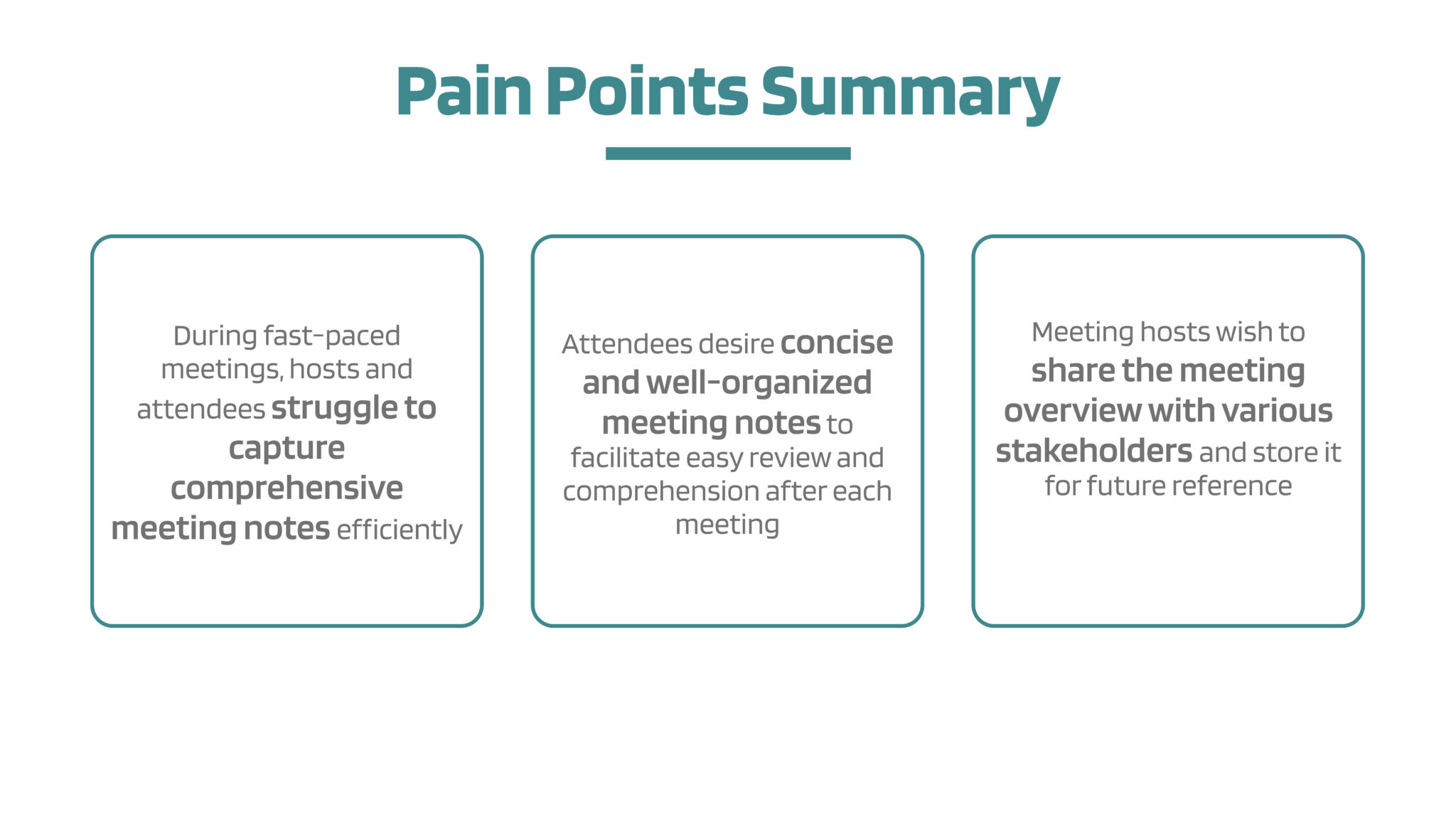Capstone Internship
Lenovo
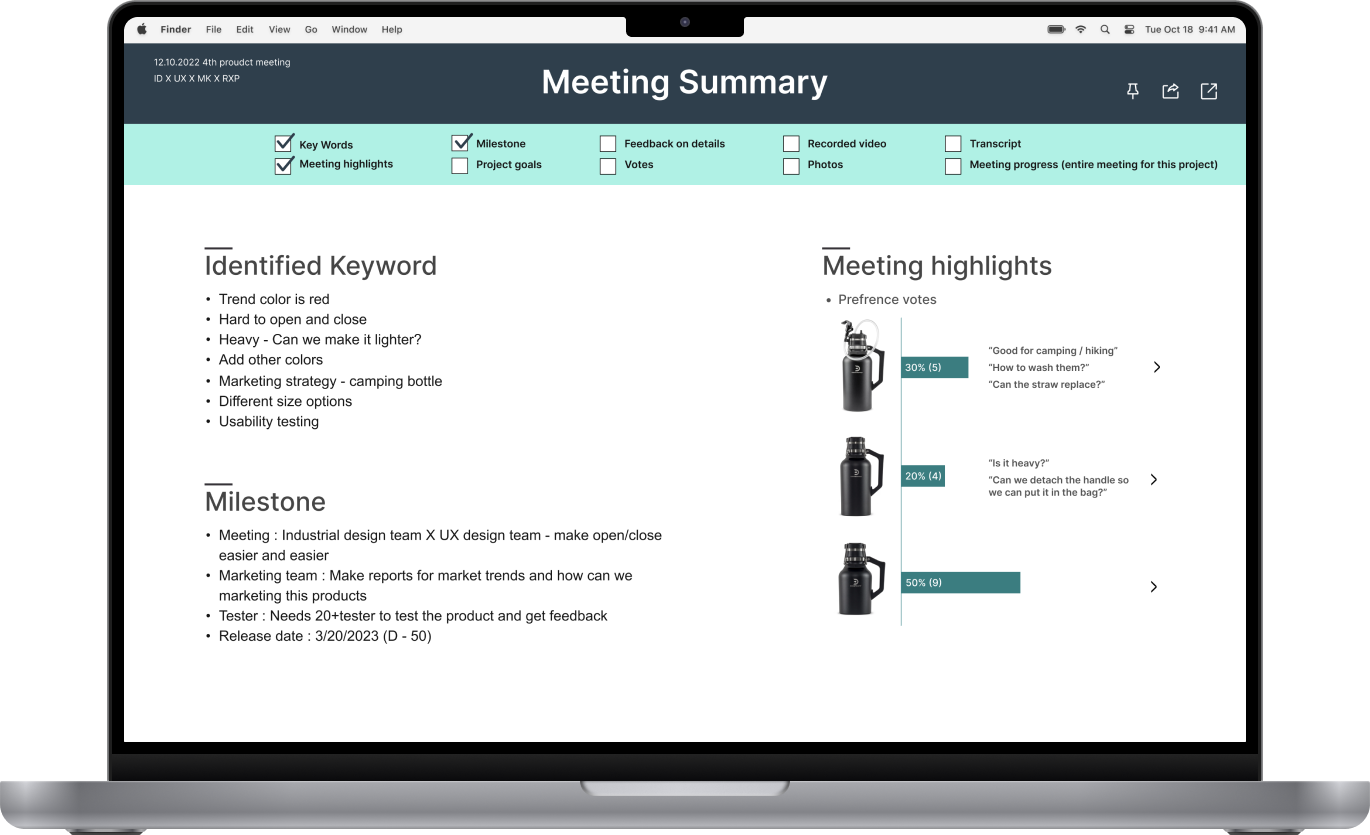
Overview
During my capstone internship at Lenovo, I designed Knowvo, a revolutionary hardware and software system. Knowvo utilizes AI to digitally transform work environments, including co-working, remote, onsite, and mid-scale meetings. It enables users to capture, consolidate, and archive meeting content and decisions. With voice command capabilities, Knowvo streamlines the meeting documentation process.
About
Team Projects
Gina, Bruce, Rebecca, Sylvia
Role
UX/UI Designer
Product Thinking, Concept Development, Interaction Design, Prototyping, Storytelling
Duration
5months
Design Process

1. Empathise / Understand
User-Centric Market Analysis: Understanding Our Target Audience
Construction partnering focuses on bringing together large-scale construction teams regularly throughout the life of a project, with the intention of creating opportunities for
Improved communication
Improved strategy
Issue resolution
Expanding Target Audience :
Uncovering Opportunities in Partnering Facilitation
After several meetings with our manager team, we were tasked with designing a tool for a larger audience while identifying the market along the way. Initially, we were concerned that broadening the target audience would make it difficult to create a tool that wasn’t too general or obsolete. Our solution was to research many professions that are lucrative and could incorporate more stakeholders. Through extensive research, we discovered the profession of ‘partnering facilitator,’ which provided a fresh avenue for exploration
Target User Group
Workers that requires knowledge library to do their job better :
– Engineers
– Content creator MCN (Multi-Channel Network)
– Civil engineer
– Partnering Facilitator
Ultimate Impact
To create a comprehensive knowledge repository facilitating seamless onboarding for new employees by documenting and transferring industry expertise.”
2. Define: What are the main problems we want to solve?
Existing Problems
- Workers must meet KPIs to maintain employment.
- Industry lacks standardized task flows and knowledge repositories.
- Workers continually acquire new knowledge for various tasks.
- Communication with numerous stakeholders is frequent.
- Proficient skills are essential for the job.
- Consistent documentation of work is necessary.
Possible HMW
- How can we establish industry-standard task flows?
- How do we boost worker efficiency to achieve KPIs?
- How can we ensure stakeholders grasp workers’ deliverables?
- How do we streamline work documentation for workers?
- How can we facilitate efficient skill learning and onboarding for workers?
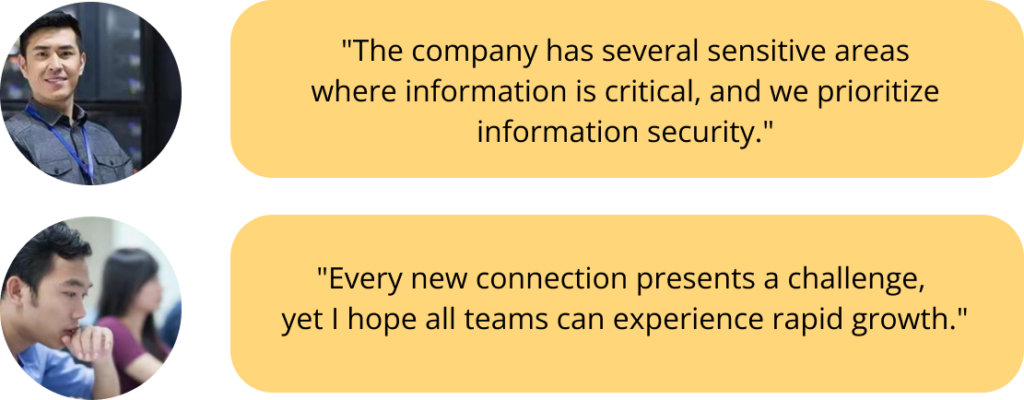
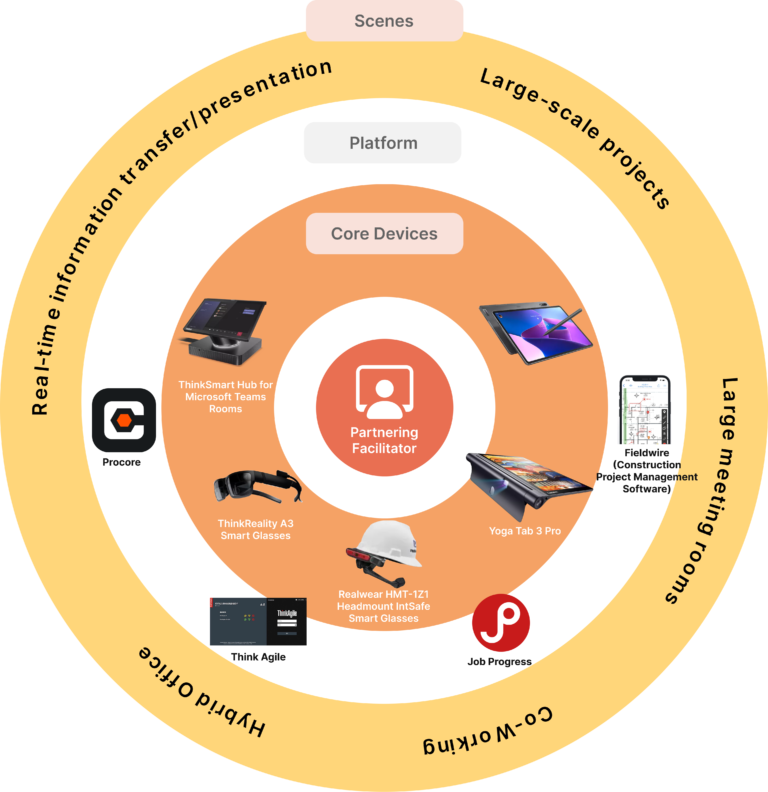
How might we design a solution that optimizes project process,
enhances knowledge management, and ensures information security
for all stakeholders involved?
User Interview
We interviewed 4 diffrent occupations to see
- What kind of information do you usually transfer back and forth?
- What software or hardware do you usually use for it?
- Are there any problems during communication and co-working?
- What are the current solution for the communication problem?
- How important is being “on time” with your deliverables?
- Does timely information affect your ability to deliver?


3. Ideate



Usability Test
The digital 3D workspaces replicate real-life scenarios, fostering collaborative and efficient interactions between designers and clients
Prioritize simplicity and ease of use for products and services.
- Emphasize intuitive design and functionality.
- Enable personalization options for users.
- Segment features into identifiable levels.
- Level one: basic functions like object scanning and identification.
- Level two: more complex tasks such as sketching or modifications.
- Maintain version control to track iterations effectively.
- Foster collaboration and communication through integrated commenting features.
- Explore how on-site workers can benefit from our product.
- Develop detailed user cases showcasing benefits for on-site workers.
- Determine the ideal interface – web or app – based on user needs.
- Explore the potential of voice commands for improved usability and efficiency.
Exploring efficient real-time knowledge and document transfer methods
- Remote or hybrid workers may find the product unsuitable.
- The pointers appear misaligned with the projector.
- Projection necessitates a dark environment and may not suit on-site workers preferring brighter settings.
- Clarity in the product’s intended use is essential.
- Additional supporting details are required to address our “How Might We” (HMW) statements.
- Arm gestures may induce fatigue in users.
- Gesture functionality appears restricted.
- How does the projector discern gestures when users are positioned in front of it?
- Attempting to address multiple issues simultaneously may be overly ambitious.
Iteration
Refocusing Product Ideation: The Importance of Prioritizing Knowledge Sharing
The function and UIUX parts has to be modified based on the results derived from the survey conducted after the alpha test.
Challenge
Following a significant review session with leaderships at Lenovo, we discerned an overemphasis on collaboration within our design, deviating from our core objective of crafting a tool that optimizes the efficiency of knowledge sharing.
Solution
We streamlined our approach to emphasize precision and efficacy within hybrid workspaces, thereby reinforcing the ongoing trajectory of digital transformation.
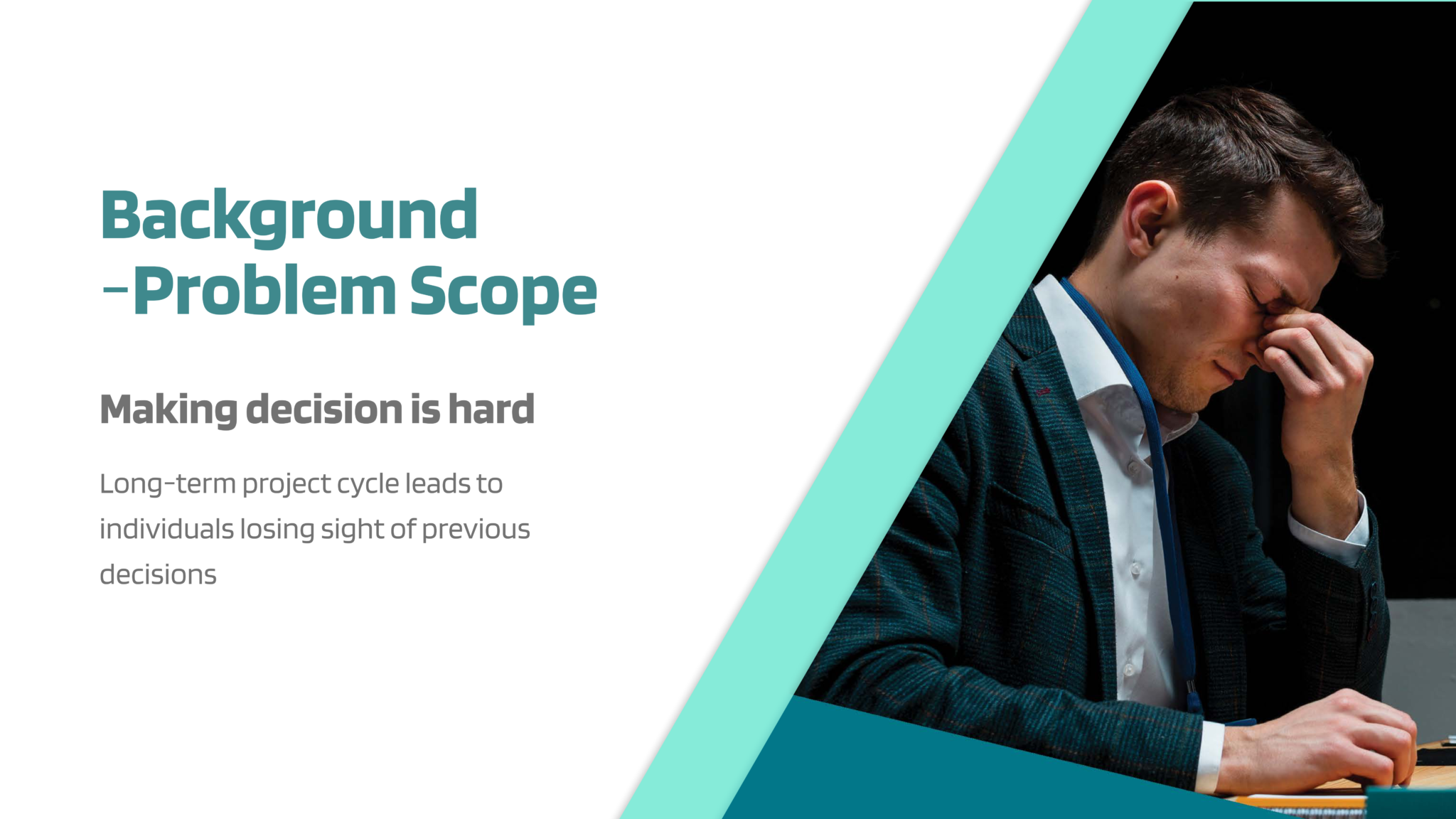


Story Board

Prototype

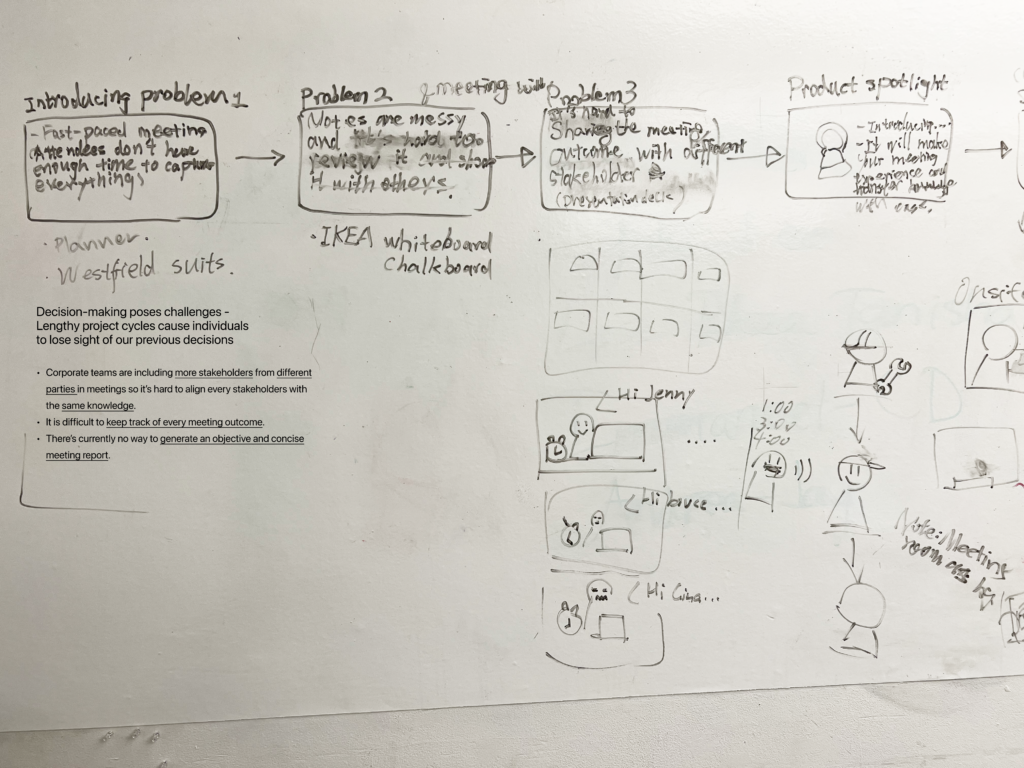

Ideation
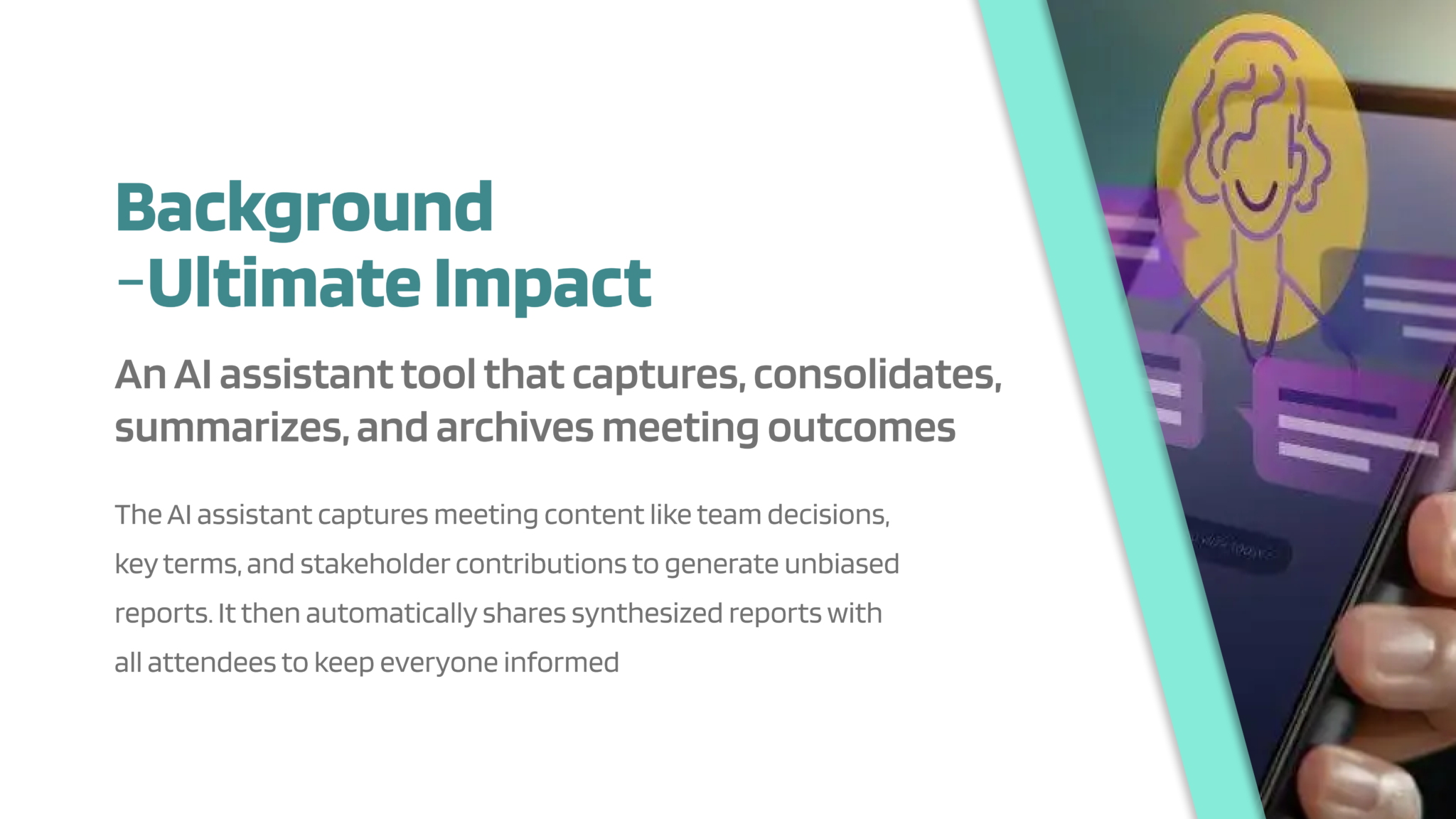
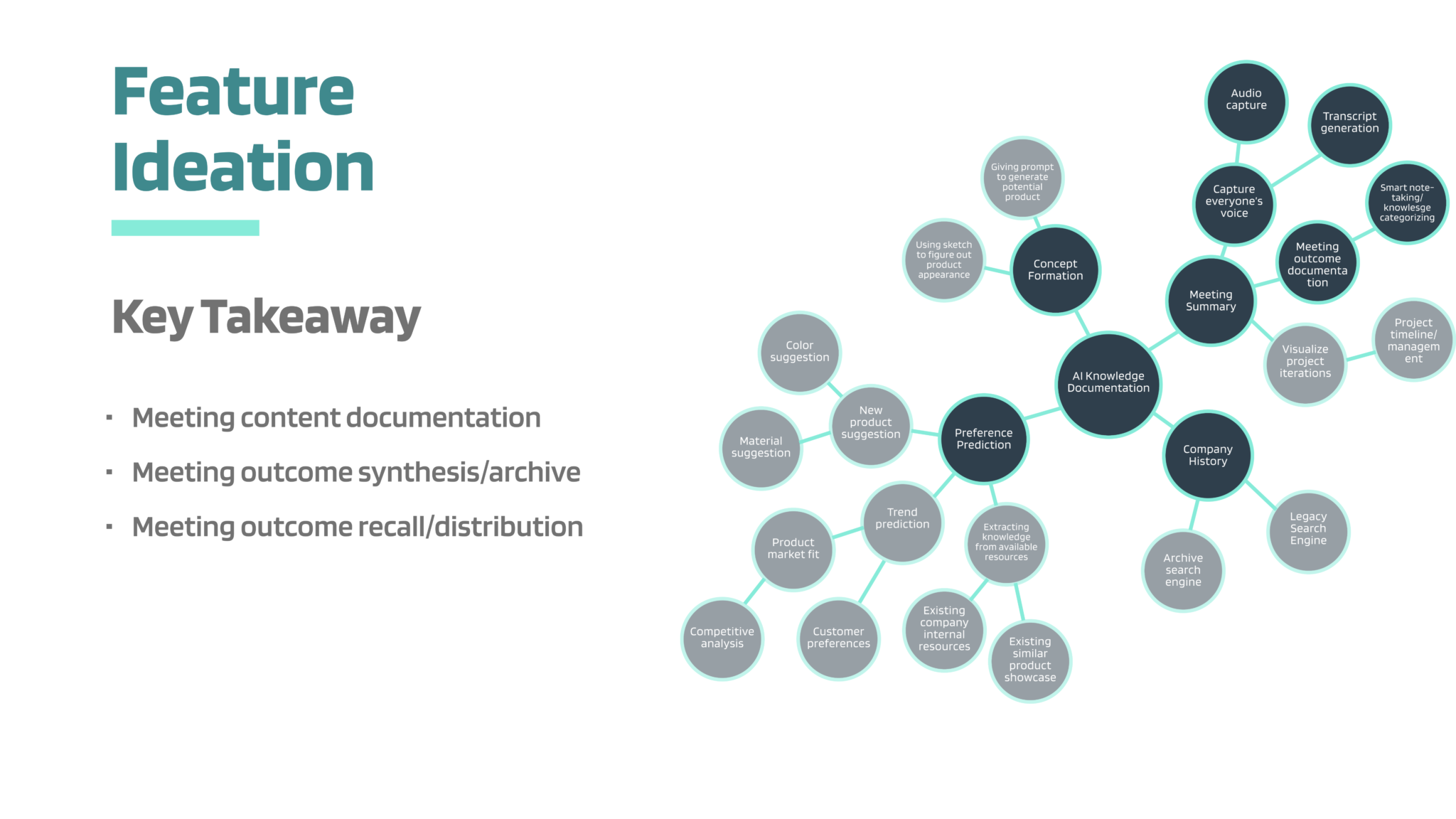
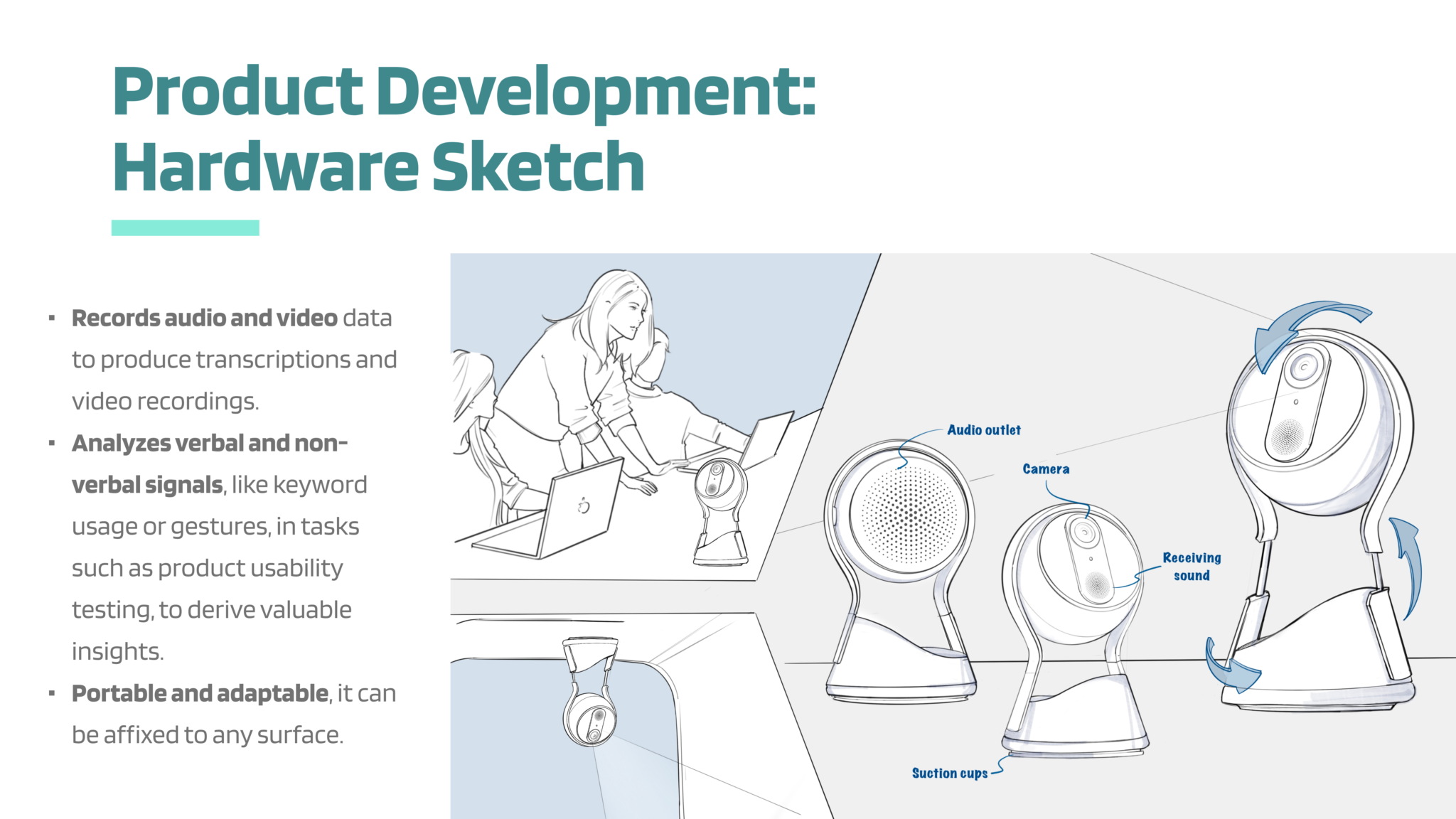
What is Knowvo?
It’s a AI Hub.
Utilizing AI for streamlining, summarizing, and transferring meeting content.

Interface Design


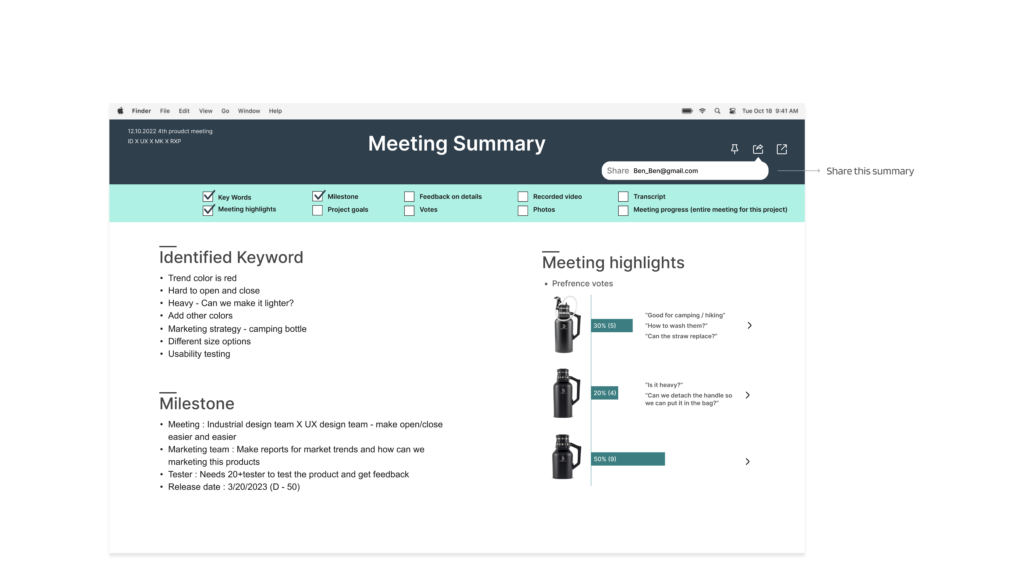


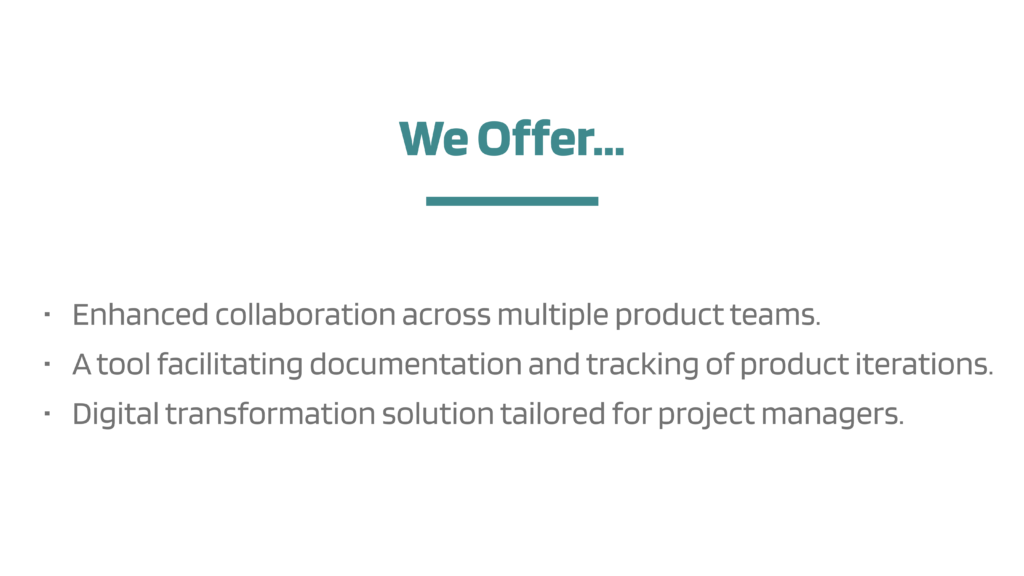
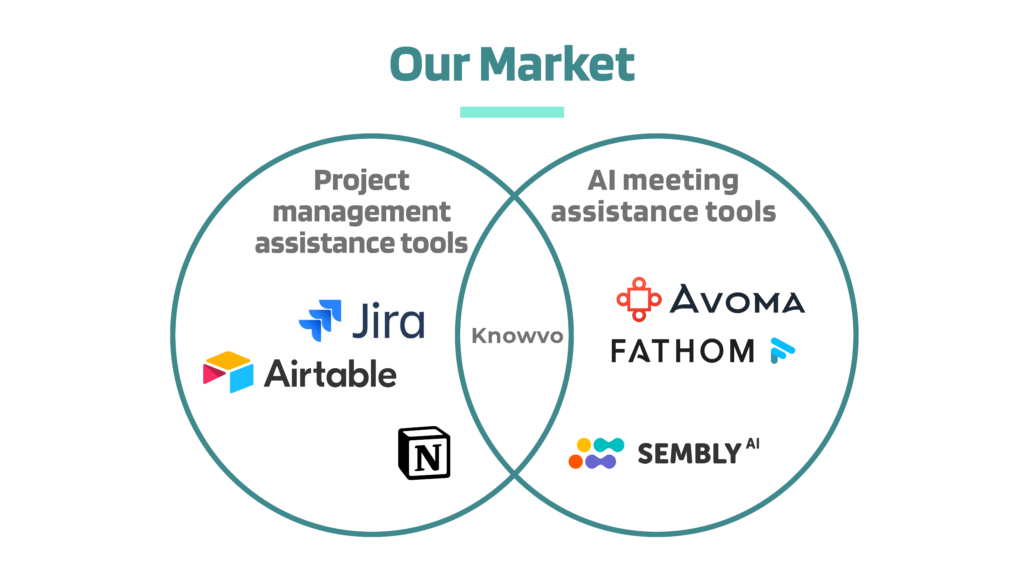
Chllanege
Constantly pivoting is essential as we strive to discover a solution that caters to diverse industries. Achieving equilibrium between hardware and software components is crucial in our product development. Crafting a forward-looking product necessitates managing limited research resources effectively.
Reflection
Maintain a broad vision by conducting research across diverse industries to identify common pain points. Stay committed to designing a knowledge transfer optimization tool. Continuously track and integrate feedback to enhance each iteration of our design.

